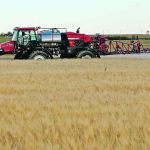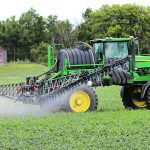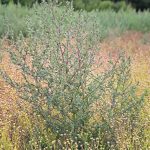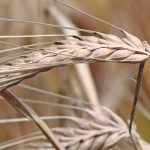It’s obvious to Scott Day that Canada has a reputation problem. At a digital ag conference in Winnipeg last month, Day went to the microphone to ask a question, although it was really a statement. “(Ag tech) companies are getting the impression that Canada is a very difficult place for the regulatory registration process,” said […] Read more
Tag Archives glyphosate — page 5

EU glyphosate renewal runs into snag
BRUSSELS, Belgium — A proposal to renew authorization of glyphosate failed last week to get sufficient backing by European Union states, pushing the issue back to November. The European Commission had proposed allowing the use of the pesticide until the end of 2033. Glyphosate is controversial in Europe because of claims it can affect biodiversity, […] Read more

Clean grain keeps markets open for all
Contaminants in grain not only lower your price on that load, it can also have a negative impact on future buyers and end users. The solution? Keep it Clean. Started by the Canola Council of Canada in 2016, the Keep it Clean program has been at the forefront of promoting hygiene in grain shipments, whether […] Read more

Push for ‘glyphosate-free’ causes market risks
Keep It Clean website provides farmers with detailed information on how to properly use glyphosate as a pre-harvest aid
Glyphosate is registered for pre-harvest weed control in many Canadian crops. But with public and food industry attention on the herbicide, applying it to a crop in August is still a major market risk for farmers and Canada’s grain trade. For instance, it can be sprayed on pulse crops to control weeds because maximum residue […] Read more
Push for ‘glyphosate-free’ causes market risks
Glyphosate is registered for pre-harvest weed control in many Canadian crops. But with public and food industry attention on the herbicide, applying it to a crop in August is still a major market risk for farmers and Canada’s grain trade. For instance, it can be sprayed on pulse crops to control weeds, because maximum residue […] Read more

Feds lift pause on MRL hikes
Health Canada said last week it will resume evaluations of increased maximum residue levels for pesticides, but that doesn’t include glyphosate. Agriculture minister Marie-Claude Bibeau said the government received more than 20,000 submissions on glyphosate during consultations on increasing MRLs and hasn’t made its way through all of them. The prospect of more information is […] Read more

Group 14-resistant kochia found in central Sask.
Producers began using Group 14 herbicides once weeds started to appear in fields that were resistant to glyphosate
Charles Geddes, a research scientist in weed ecology at Agriculture Canada’s research centre in Lethbridge, said growers dealing with kochia should keep a lookout for this type of resistance.
Bayer will consider breakup
Speaking to reporters at Bayer’s headquarters in Leverkusen, incoming CEO Bill Anderson offered clues as to his vision for the company, stressing a focus on results and advancing science, while keeping open the question of a breakup.

Is pre-harvest glyphosate worth it?
New study determines malting barley can exceed the maximum residue limit even when application followed the label
A new study found the maximum residue limit for glyphosate in malt barley was exceeded, even though it was applied according to label requirements. “When the application was done at the recommended time and rate, so 900 grams ae (acid equivalent) per hectare at the hard dough stage, we had occurrences with residue above the […] Read more
PMRA’s left turn started small
A routine submission for higher maximum residue limits has snowballed into sweeping proposed reforms at Canada’s Pest Management Regulatory Agency. In May of 2021, the PMRA proposed increasing glyphosate MRLs on a variety of pulses and other products such as barley bran, wheat germ and rolled oats. The proposal was in response to an application […] Read more




